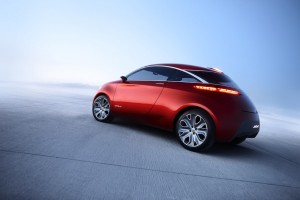China’s Ministry of Commerce, hoping to forestall a potential slump in the country’s automotive market, have decided to extend their own version of the cash-for-clunkers program.
The “old car for new” subsidy, which expired on May 31, will now run until at least the end of the year, and provides cash incentives of up to $700, or 6,000 yuan, for those who trade in an outdated vehicle for a new model.
While the program is designed to maintain momentum in the car market it has a secondary purpose, much like America’s clunkers program, which was intended to help rid the roads of old, fuel-guzzling, smoke-spewing vehicles.
That’s even more important in China, which is only now ramping up its vehicle emissions standards to world-class levels. Most older models don’t come close to meeting today’s smog rules, a particular problem in pollution-choked cities like Shanghai and Beijing.
Through the original May 31 deadline, MOC officials report the old-for-new program had generated an additional 127,000 vehicle sales.
With the help of this and several other incentive program, the Chinese market has proved surprisingly resilient, last year maintaining a growth rate well into the double-digits, even as demand in more established markets took a nosedive.
In fact, China last year pushed past the U.S., on a retail level, to become the world’s largest automotive market. Most analysts expect the gap to continue, even after the American market recovers.
Meanwhile, General Motors recently reported that, during the first of 2010, it sold more vehicles in China – again, at the retail level – than it did in the States. (Click Here for that report.)


Does China’s cash for clunkers also cover Americans cars sold there? Remember, when we had our cash for clunkers it also included foreign cars but when Japan had there cash for clunkers they didn’t include Americans cars. Just there own.
Jim,
My understanding is no, the incentives do not. But the number of imported American models sold in China is insignificant, to begin with, in large part due to tariffs. That’s the same challenge for all foreign-made automotive products. The tariffs have come down as a result of China’s role in the WTO, but it’s still a fair bit of a penalty to import v build in China.
Paul A. Eisenstein
Publisher, TheDetroitBureau.com